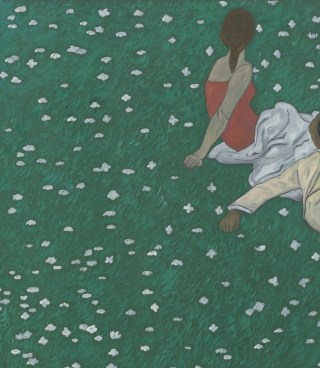Honor Titus: Ornamental Distance
Longlati Foundation is delighted to present the inaugural institutional solo exhibition of Honor Titus in China, titled “Ornamental Distance,” on September 13, 2023. The exhibition will feature a collection of thirteen varying-sized oil paintings on canvas.
Ornamental fences are a recurring element in Titus’s tennis-themed series of works. These fences serve functional purposes within architectural structures, employing intricate patterns to achieve aesthetic effects. They simultaneously reject outsiders while disguising this rejection under a decorative facade. This paradoxical aesthetic of welcoming and rejecting permeates our daily lives, silently dictating the distance of beauty. In the space of Longlati, “Ornamental Distance” also alludes to the distance of appreciation within the art world. The protective barriers around the artworks have been replaced by decorative fences, inviting viewers to stand in Titus’s shoes and appreciate the depicted landscapes: waltzes in upscale neighborhoods, nearby galas, leisurely moments of solitary rowing, etc. Concurrently, these paintings per se, favored by the upper echelons of society, can be seen as part of the aforementioned scenes.
Once an emerging punk musician, Titus views these bourgeois lifestyles from an outsider’s perspective. The romantic and resplendent exteriors often belie their exclusive nature. Appreciation inherently entails a sense of distance, sometimes bordering on a voyeuristic viewpoint. The expressions of his depicted characters are elusive, making it difficult to determine if they are isolated observers on the outside or indulgers within the clamor and opulence. Often, they exist simultaneously inside and outside: the woman in Shimmering Jubilee gazing back from amidst a cluster of fireworks and the trumpeter seated on a tree stump in Dewey Would Go both capture an ephemeral sense of detachment amidst the revelry.
Yet, Titus’s paintings are also about himself. These figures, with skin tones mirroring his own, appear in scenes once dominated by white elite society, and the prominently placed letter “H” connects them intentionally. Here, the ornamental distance becomes a measurement of the painter’s distance from himself and the subjects of his art. The rhythm of near and far parallels the game played on a tennis court—you need to get close to paint, but you often have to step back to perceive the whole.

